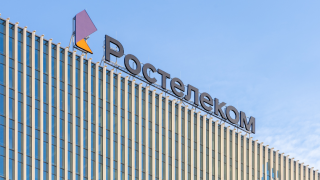The new route has become the company's second unique project this year, expanding its presence in the international telecommunications market. The new route adds to the company’s recent successful launch of the Southern Route, which connects countries in Europe, the Middle East, and the Eurasian region. It has already been put into commercial operation, and negotiations are currently underway with a number of large operators in the Eurasian region and Southeast Asia.
Subscribe today for free
The company's strategic goal
The launch of new routes reflects the company's long-term strategy to develop infrastructure aimed at ensuring closer connectivity of Europe, the Eurasian region, South Asia and the countries of Southeast Asia. This route complements the previously launched Southern Route, forming a more complete network capable of satisfying the growing demand for reliable and high-speed telecommunications solutions in these regions.
We strive not only for technological development, but also for the creation of a sustainable infrastructure that will ensure a high level of connectivity in the regions. These routes play an important role in our mission to provide innovative services in strategically important areas.
A look at the future
Telegraph42 continues to work on expanding its presence in international markets. In the near future, the company intends to continue to strengthen cooperation with operators from the countries of South, Southeast Asia, the Middle East and the Eurasian region.
The launch of the new route marks an important step in the development of the international telecommunications infrastructure connecting key regions.
Following the principles of providing high-quality services, the Telegraph42 has identified key tasks within the framework of infrastructure development.
Over three years, the company has successfully launched three unique geographically dispersed routes — the Southeast Asia route, the Southern route, and theSouth Asia route.
Providing operators with access to the Marseille and Karachi traffic exchange point sites, the new route favourably highlights its advantage and uniqueness.
Leading operators in the countries of Eurasia and Southeast Asia have expressed their willingness to gain access to services along the route.
The main objective of the new direction is the geographical diversification of data flows, and will also allow:
Reduce risks: The diversity of data transmission routes reduces the likelihood of interruptions in Internet access due to unforeseen failures or geopolitical factors.
Improve stability and reliability: By distributing traffic across several directions, network access for end users in the region will become more stable.
Increase bandwidth: Using DWDM technology ensures efficient traffic management, allowing large amounts of data to be transmitted with minimal delays.
We believe that network diversification and the use of advanced solutions are key to creating a sustainable and secure digital environment.
With this project, we are taking another step towards providing reliable and fast internet to all users in the region.
RELATED STORIES
Telegraph42 unveils alternative route for Hong Kong to Frankfurt data





